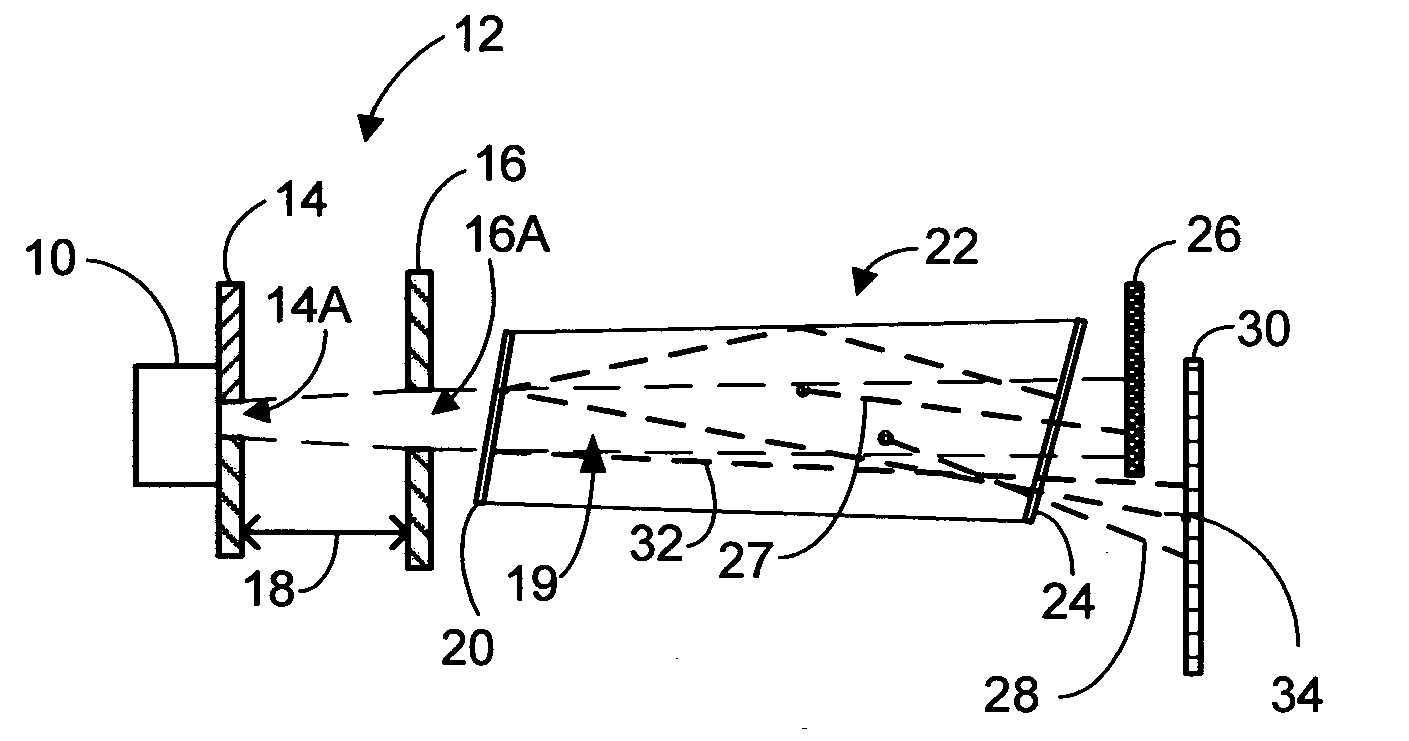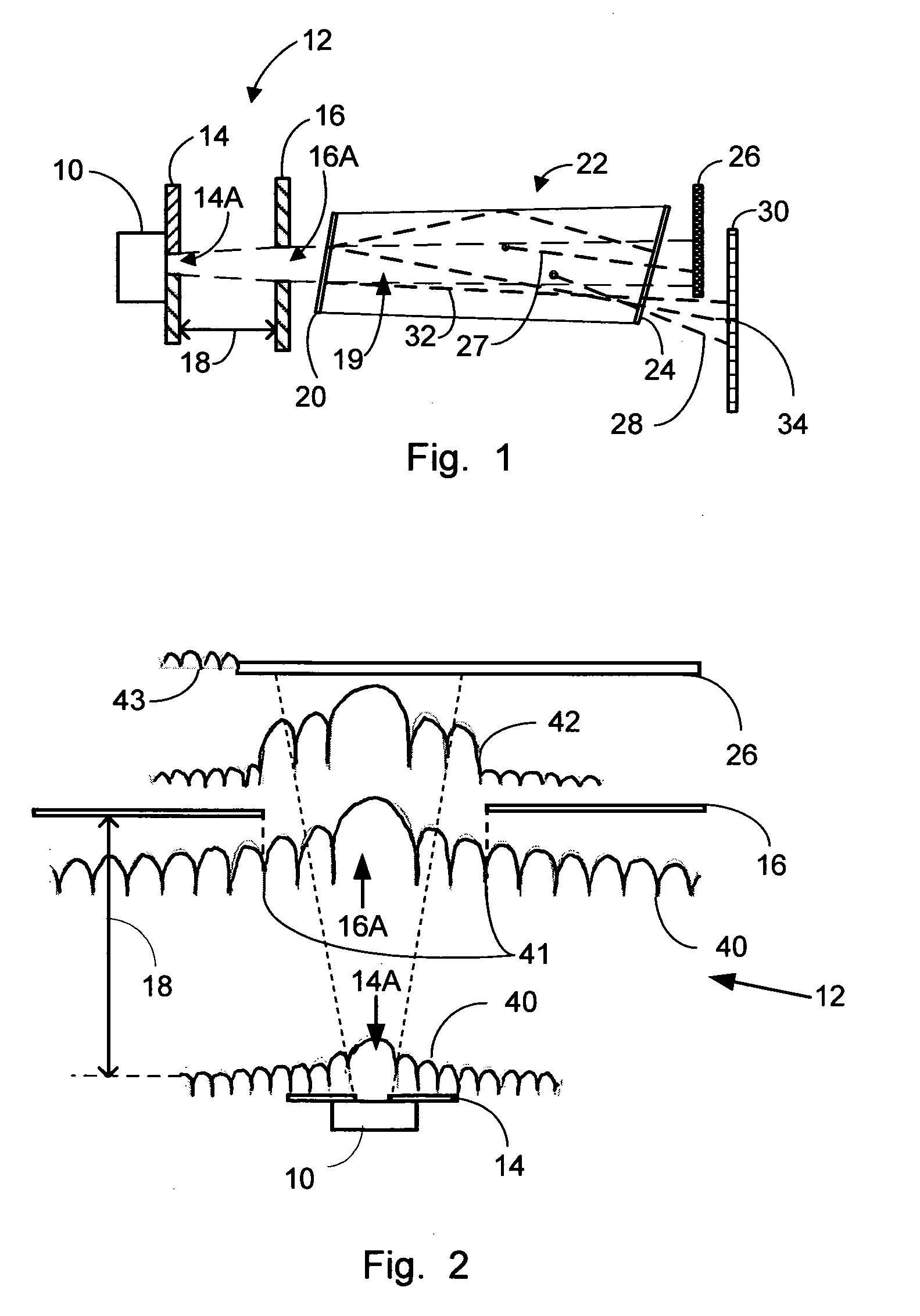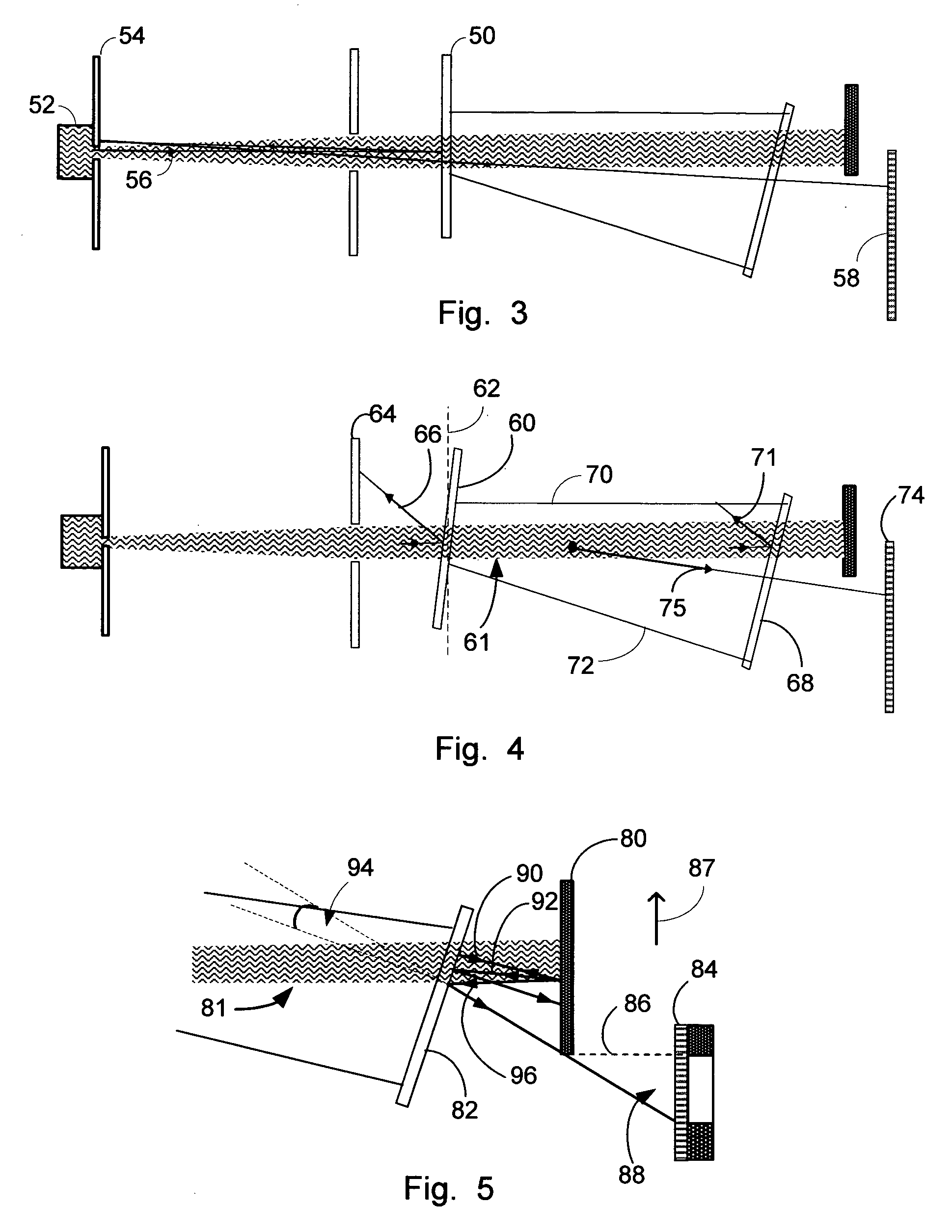Detecting and counting bacteria suspended in biological fluids
a technology of biological fluids and bacteria, applied in the field of assaying body fluids, can solve the problems of easy errors in light scattering measurement, and achieve the effects of reducing the level of light reflected, enhancing the signal to noise and/or signal to clatter ratios
- Summary
- Abstract
- Description
- Claims
- Application Information
AI Technical Summary
Benefits of technology
Problems solved by technology
Method used
Image
Examples
example 1
[0030]In FIGS. 6 and 7 graphs comparing between calculated and measured angular beam profiles generated by means of apertures having different diameters are respectively shown. Plots 100 and 102 respectively correspond to the calculated and measured profiles when employing aperture having a diameter of 150 μm. Similarly plots 110 and 112 respectively correspond to calculated and measured intensities when employing aperture of 500 μm. The intensity of light at a diffraction angle θI(θ), is given according to diffraction theory by equation (1):
I(θ)=(J1(kaθ)kaθ)2,(1)
[0031]where
[0032]J1—is the Bessel function of the first kind, a—is the aperture radius, and k—is the wave-number. The calculated and measured intensities shown in a logarithmic scale are measured in arbitrary units (A.U.); the angles are measured in degrees.
[0033]The width of a beam emerging off an aperture of radius a−w(a), is given by equation (2):
ω=2a+2πλaL,(2)
[0034]where
[0035]λ—is the wavelength, a—is the radius and L—d...
example 2
[0037]In FIG. 9 a graph comparing between the intensities of the residual illuminating light received at the detector as a function of the scattering angle, with and without the light obscuring means disposed in its place is respectively shown. The intensities shown are measured in arbitrary units (A.U.) employing logarithmic scale. Plot 130 presents the computed beam profile considering the first aperture, which is adjacent to the laser. Dashed line 132 presents the scattering angle corresponding to the diameter of the second apertures which complies with the first zero of the respective Bessel function. Plot 134 presents the intensity of the illuminating beam emerging off the second aperture as a function of the scattering angle when the light obscuring means is avoided. Plot 136 presents the intensity of the residual illuminating light received by the light detector when the light obscuring means is positioned in its place. Dashed line 138 presents the scattering angle correspond...
example 3
[0038]In FIG. 10 a graph comparing among the intensities of the residual illuminating light received at the detector and exemplary scattering profiles computed for various bacterial concentrations is shown. Plot 140 presents the intensity of light received at the light detector as a function of the scattering angle when the light obscuring means is avoided. Plot 144 presents the angular profile of the residual illumination when the light obscuring means is positioned in place. Plots 146, 148, 150, 152 present scattering profiles computed according to the Mie theory for bacterial concentrations of 106, 105, 104, 103 respectively. The bacterial model employed consists of spheres evenly suspended in a liquid, having radii of 1.5 μm whose refracting index equals 1.35, whereas the refracting index of the liquid equals 1.33. For practical purposes and by considering the dynamic ranges of detectors available in the marketplace the maximal scattering angle need not according to the present ...
PUM
| Property | Measurement | Unit |
|---|---|---|
| maximal angle | aaaaa | aaaaa |
| surface roughness | aaaaa | aaaaa |
| surface roughness | aaaaa | aaaaa |
Abstract
Description
Claims
Application Information
 Login to View More
Login to View More - R&D
- Intellectual Property
- Life Sciences
- Materials
- Tech Scout
- Unparalleled Data Quality
- Higher Quality Content
- 60% Fewer Hallucinations
Browse by: Latest US Patents, China's latest patents, Technical Efficacy Thesaurus, Application Domain, Technology Topic, Popular Technical Reports.
© 2025 PatSnap. All rights reserved.Legal|Privacy policy|Modern Slavery Act Transparency Statement|Sitemap|About US| Contact US: help@patsnap.com



